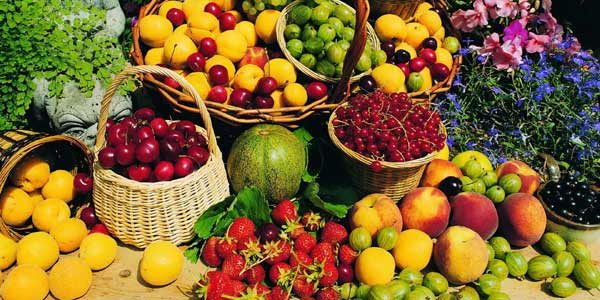“Polyphenol” is one of those words you may hear thrown around when someone is talking about red wine or maybe dark colored fruits. If you have questioned what a polyphenol is well, in essence, they are powerful nutrients that are found in plant foods. Webster’s Dictionary defines a polyphenol as “an antioxidant phytochemical (as chlorogenic acid) that tends to prevent or neutralize the damaging effects of free radicals”. They’re so powerful that they have a hand in combating diseases such as diabetes, heart disease, cancer, and even aid in aging more gracefully. The best news of all, they are a delicious way to keep the body healthy.
There are, quite literally, thousands of different types of polyphenols! So many that it would take all day to list them. To simplify they can be broken down into four basic classes; phenolic acids, flavonoids, stilbenes, and lignan’s. Many fresh fruits and vegetables are an amalgam of the different classes. Below is just a very small list of benefits and where they can be found.
- Phenolic acids:
-Antibacterial and inflammatory properties, act as antihistamines, and antioxidant aid
-Found in coffee, turmeric, vanilla, berries, olive oil and nuts
- Flavonoids:
-Provide color pigment to fruits and veggies, antioxidant and anti-inflammatory properties, and cardiovascular aid
-Found in chocolate, berries, onions, garlic, oranges, and parsley
- Stilbenes:
-Antioxidant power, cancer prevention, and cardiovascular health
-Blueberries, red wine, cranberries, and peanuts
- Lignans:
-Womens health, cancer prevention, heart health, and bone health
-Flax and sesame seeds, kale, broccoli, brussel sprouts, and apricots
Again, this is a very modest list of where these polyphenols can be found! Including a wide variety in the diet can be especially helpful when trying to keep the body healthy. A good idea of how to incorporate a vast array is to pick a new vegetable to try every time you go shopping for groceries. Pick the vegetable first and then find a way to prepare it. A myriad of recipes can be found online for almost any of the fruits or vegetables you select. A personal favorite way to search for a recipe is www.pinterest.com .
It is important to pay attention to the way you store, cook, and pick these nutrient packed foods. The content of certain polyphenols can be largely reduced by cooking them at high temperatures for long periods of time. It is better to cook vegetables at a low heat for under 10 minutes. Eating them raw is best way to get a higher nutrient content. Keep in mind that when storing produce , it should always be covered tightly and used within a few days of cutting. When choosing plant foods, remember to select at the peak of their ripeness and when the particular fruit or vegetable is in season.
If you are interested to learn more about polyphenols, their benefits, and how to eat them at their best then I suggest this article! (https://www.ncbi.nlm.nih.gov/pmc/articles/PMC2835915/)




